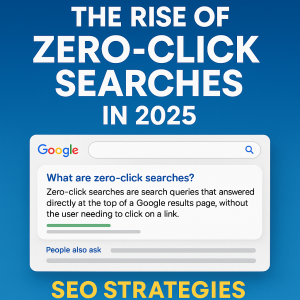Few digital nightmares compare to watching your once-stellar Google rankings vanish overnight. One moment, you’re basking in the glory of page one dominance. The next, you’re scrolling past competitors like a forgotten relic. What happened?
Google’s algorithm is a shapeshifter—unpredictable, relentless, and occasionally brutal. Ranking drops aren’t random. They’re signals. Maybe your SEO strategy grew stale. Perhaps Google unleashed another update that reshuffled the deck. Or worse—your site unknowingly tripped a landmine in Google’s ever-expanding rulebook.
Let’s dissect the top culprits behind sinking rankings—and arm you with actionable fixes.
1. Google’s Algorithm: The Silent Ranking Assassin
Google tweaks its algorithm thousands of times a year. Most changes are minor. But when a core update or spam purge rolls out? Chaos ensues.
Types of Updates That Wreak Havoc
- Core Updates: Broad recalibrations of Google’s ranking criteria. Sites with thin, outdated, or unoriginal content often tank.
- Spam Updates: Crackdowns on manipulative tactics—think keyword stuffing, shady backlinks, or AI-generated gibberish.
- Helpful Content Update: A ruthless prioritization of people-first content. If your site feels like a content farm, brace for impact.
The Fix:
- Monitor Google Search Central Blog for update announcements.
- Audit content for depth, accuracy, and originality.
- Ditch “SEO hacks” and focus on authentic value.
Fun fact: The 2023 “Helpful Content Update” wiped out 10-15% of low-quality sites in some niches. Don’t be a statistic.
2. Content Decay: When Good Pages Go Bad
Google’s content standards evolve. What worked in 2020 might flop today.
Signs Your Content Is Failing
- Outdated Facts: A “2022 Tech Trends” post won’t cut it in 2025.
- Thin Substance: 500-word fluff pieces get bulldozed by 3,000-word guides.
- Duplicate Content: Even unintentional plagiarism triggers penalties.
The Revival Strategy:
- Refresh old posts with current data, examples, and multimedia.
- Merge weak articles into comprehensive “ultimate guides.”
- Run plagiarism checks with Copyscape or Grammarly.
Pro tip: Updating old content can boost traffic by 50%+—way easier than starting from scratch.
3. Technical SEO: The Invisible Ranking Killer
Your content could be Pulitzer-worthy, but if your site’s tech is a mess, Google won’t care.
Common Technical Nightmares
- Slow Load Times: 53% of mobile users abandon sites taking over 3 seconds to load.
- Broken Links: 404 errors scream “abandoned website” to Google.
- Mobile Unfriendliness: Google’s mobile-first indexing means your site must shine on phones.
- Crawl Errors: If Googlebot can’t navigate your site, neither can rankings.
Diagnosis Tools:
- Google Search Console: Free and essential for spotting indexing issues.
- PageSpeed Insights: Reveals speed bottlenecks.
- Screaming Frog: Crawls your site like Googlebot, exposing errors.
Random but true: Amazon found that every 100ms delay in load time cost them 1% in sales. Speed isn’t optional.
4. Backlinks: The Double-Edged Sword
Backlinks still rule rankings—but toxic links can nuke your site.
Backlink Red Flags
- Spammy Directories: Links from “Top 1000 Sites You’ve Never Heard Of” hurt, not help.
- Lost Links: If authoritative sites dropped your backlinks, your rankings might too.
- Anchor Text Overkill: Exact-match anchors like “best running shoes” scream manipulation.
The Detox Plan:
- Use Ahrefs or Majestic to audit backlinks.
- Disavow toxic links via Google Search Console.
- Replace lost links with fresh ones from reputable sources.
War story: A client’s rankings tanked after a spammy guest post campaign. Disavowing 200+ shady links reversed the damage in weeks.
5. Competitors: The Silent Thieves
SEO isn’t static. If rivals outwork you, they’ll steal your rankings.
How Competitors Outrank You
- Content Depth: Their 5,000-word guide dwarfs your 800-word post.
- Authoritative Backlinks: They landed features in Forbes or Wired—you didn’t.
- UX Upgrades: Their site loads faster, looks cleaner, and keeps users engaged.
Counterattack Tactics:
- Reverse-engineer their backlinks with Ahrefs’ “Site Explorer.”
- One-up their content—add videos, infographics, or interactive tools.
- Target long-tail keywords they’ve ignored.
Funny how “competitor research” is just polite corporate espionage.
6. User Experience: Google’s Silent Jury
Google tracks how users interact with your site. High bounce rates? Low dwell time? Rankings will drop.
UX Red Flags
- Bounce Rate Over 70%: Visitors leave instantly—likely because your content misses the mark.
- Dwell Time Under 30 Seconds: Google assumes your page is irrelevant.
- Clunky Navigation: If users can’t find what they need, they’ll flee.
UX Fixes:
- Improve readability: Short paragraphs, subheadings, bullet points.
- Fix design flaws: Hamburger menus on desktop? Delete them.
- Match search intent: If users want “how-to” guides, don’t give them product pages.
Psychological hack: White space increases comprehension by 20%. Less clutter = happier users.
7. Keyword Strategy: Are You Even Speaking Google’s Language?
Target the wrong keywords, and rankings will flatline.
Keyword Pitfalls
- Over-Optimization: Stuffing “best running shoes” 20 times? Stop.
- Ignoring Voice Search: “Where’s the nearest coffee shop?” beats “coffee shops near me.”
- Misjudging Intent: Informational queries vs. commercial queries require different content.
Keyword CPR:
- Use AnswerThePublic to find conversational queries.
- Analyze SERPs—see what content ranks for your target keywords.
- Optimize for semantic search (LSI keywords, natural language).
Voice search stats: 50% of all searches will be voice-based by 2024. Adapt or die.
8. Google Penalties: The Death Sentence
Manual penalties are rare—but catastrophic.
Reasons Google Punishes Sites
- Spammy Backlinks: Buying links? Big mistake.
- Hacked Site: Malware injections get you blacklisted.
- Thin Affiliate Content: Pages stuffed with Amazon links and zero value? Penalty bait.
Penalty Recovery:
- Check Google Search Console for manual actions.
- Purge toxic elements (bad links, thin content).
- Submit a reconsideration request (with receipts of your cleanup).
Hard truth: Some penalties take months to recover from. Prevention is cheaper.
9. Local SEO Blunders (For Brick-and-Mortar Businesses)
If you’re a local business, ranking drops often trace back to Google My Business (GMB).
Local SEO Mistakes
- Inconsistent NAP: Your Name, Address, Phone must match everywhere.
- Few/No Reviews: Businesses with 100+ reviews dominate local packs.
- Unclaimed Listings: Random directories might host incorrect info about you.
Local SEO Revival:
- Optimize your GMB profile: Photos, posts, Q&A.
- Encourage reviews: Politely ask happy customers.
- Scrub duplicate listings with BrightLocal.
Local search fact: “Near me” searches grew 150%+ in 2023. Location matters.
10. External Factors: The Uncontrollable Variables
Sometimes, rankings drop for reasons beyond your control.
Unpredictable Ranking Killers
- Seasonal Trends: Halloween costume sites thrive in October—not April.
- Industry Shifts: New competitors or tech advancements change search behavior.
- Economic Changes: Recessions alter how people search (e.g., “budget laptops” spikes).
Adaptation Tactics:
- Update content seasonally.
- Monitor industry trends via Google Trends.
- Diversify traffic sources (email, social, paid ads).
The Bottom Line
Ranking drops aren’t fatal—but inaction is. Diagnose the issue, execute fixes, and outlast competitors. SEO isn’t about hacks. It’s about resilience, adaptability, and relentless optimization.
Now, grab your SEO toolkit. Your rankings won’t save themselves.



